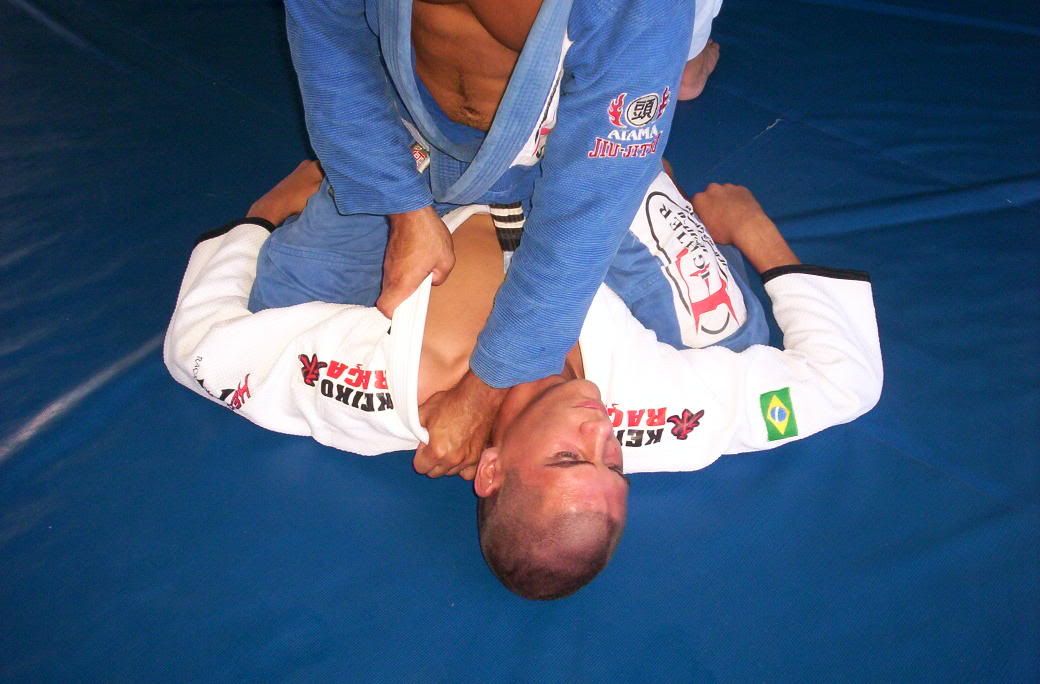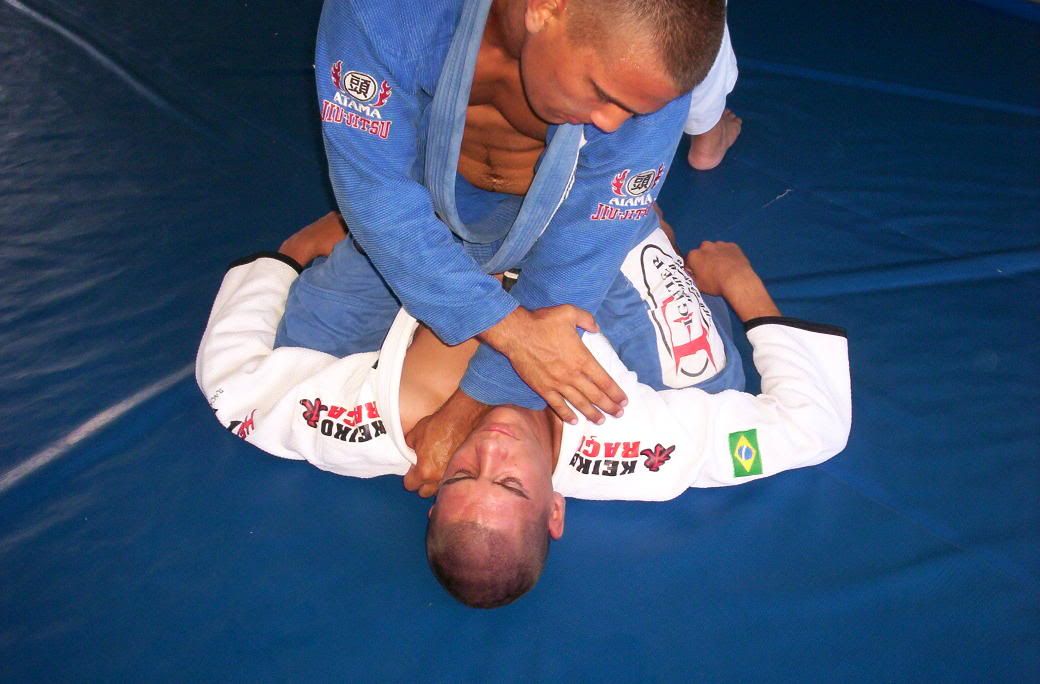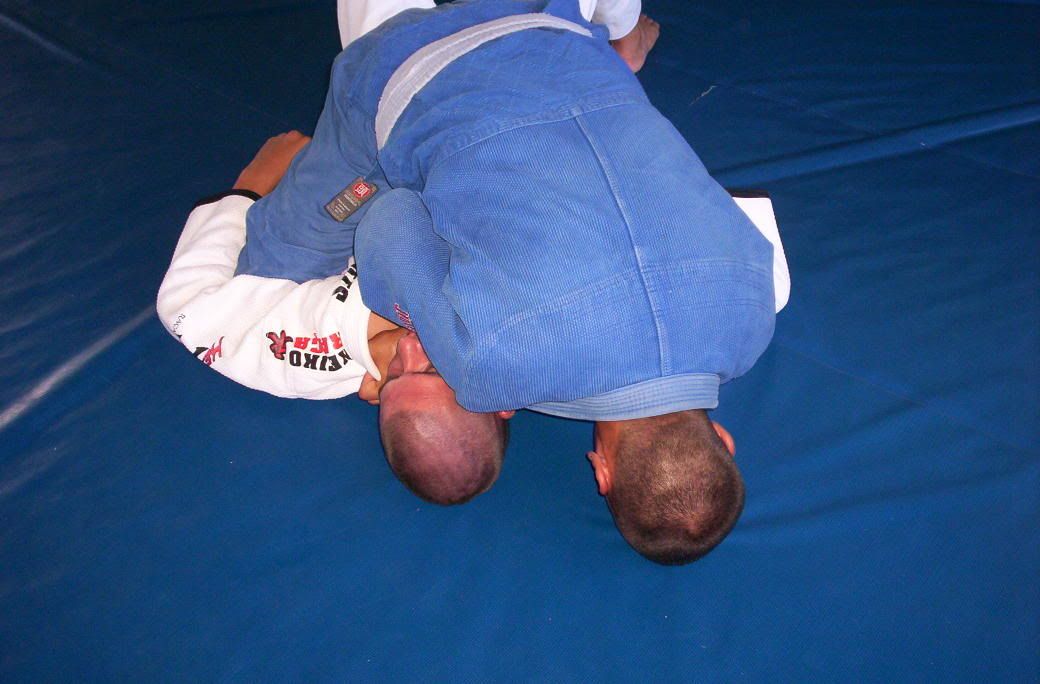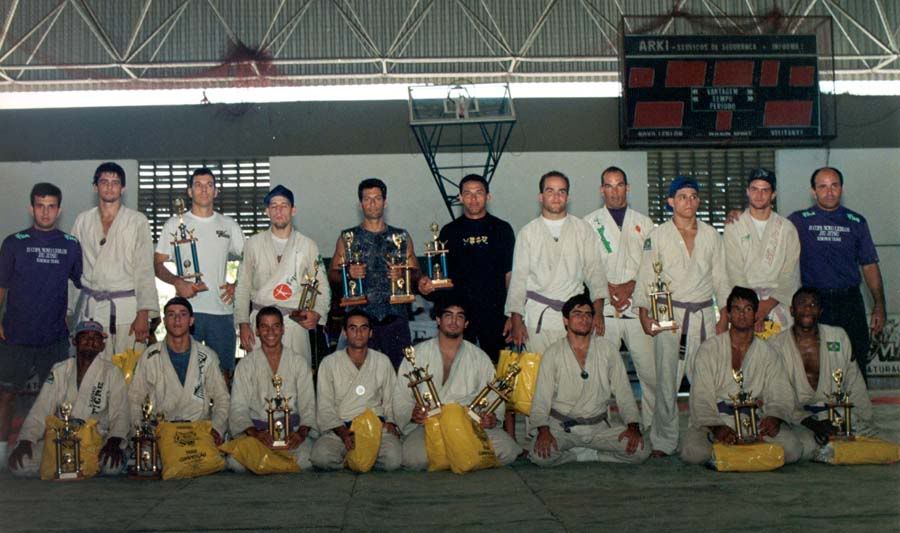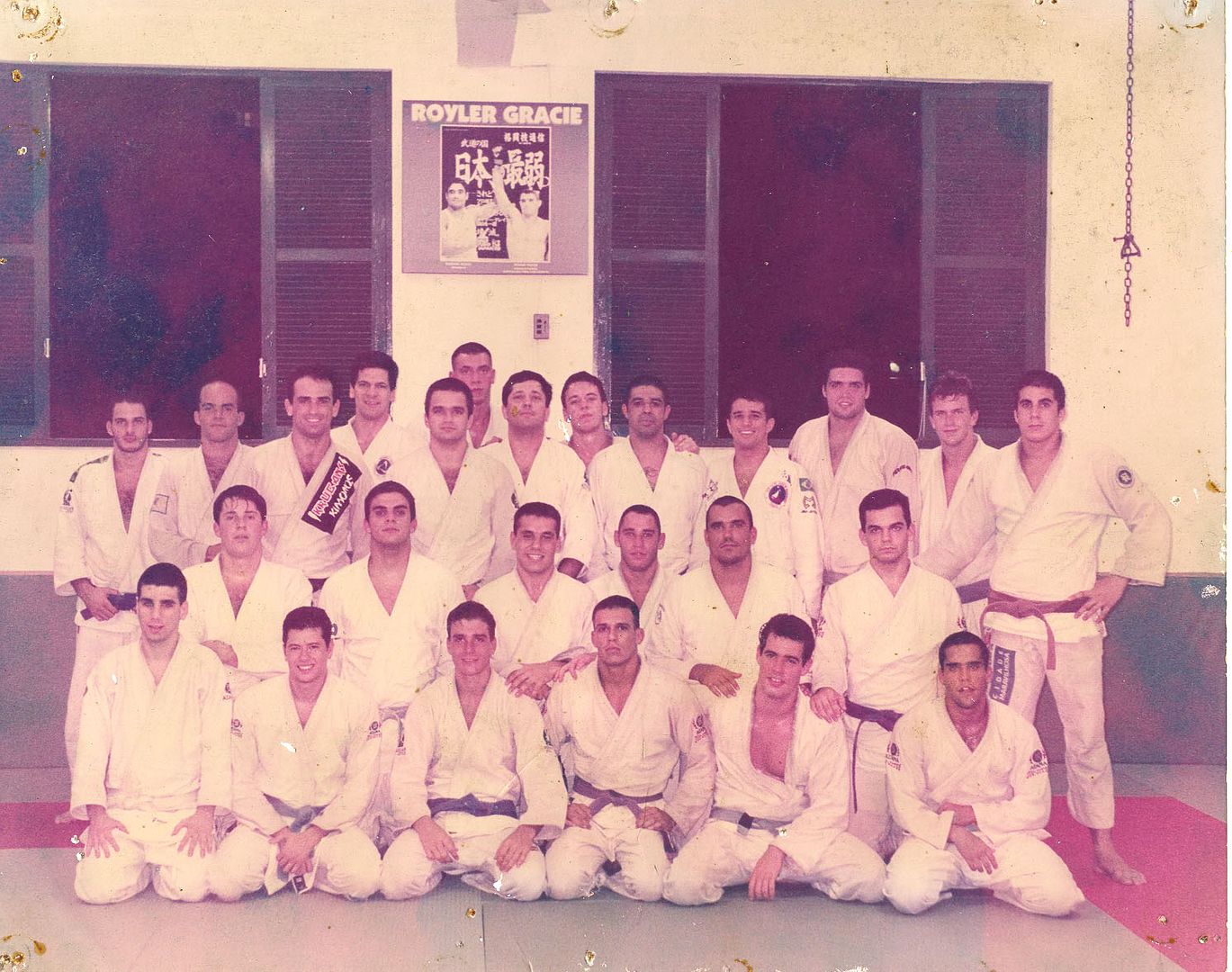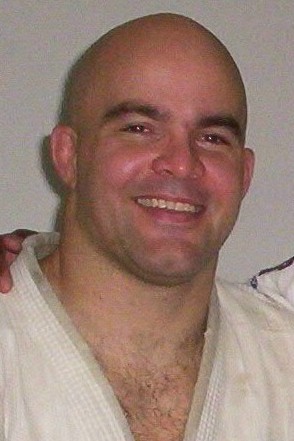Close Guard
This situation happens when you are lined down controlling your opponent using your legs. Setting them around opponent’s waist with your feet locked, your legs bended and your tailbone close the opponent’s button belly. On this situation your opponent need escape from your legs’ control, we can say, he need pass your guard. He is on top and you are on bottom but nobody have advantage, close guard is neutral situation. You are on the bottom but you have a lot of options to submit and sweep him. We will see SUBMISSIONS, SWEEPS and GUARD PASSES soon on this blog.
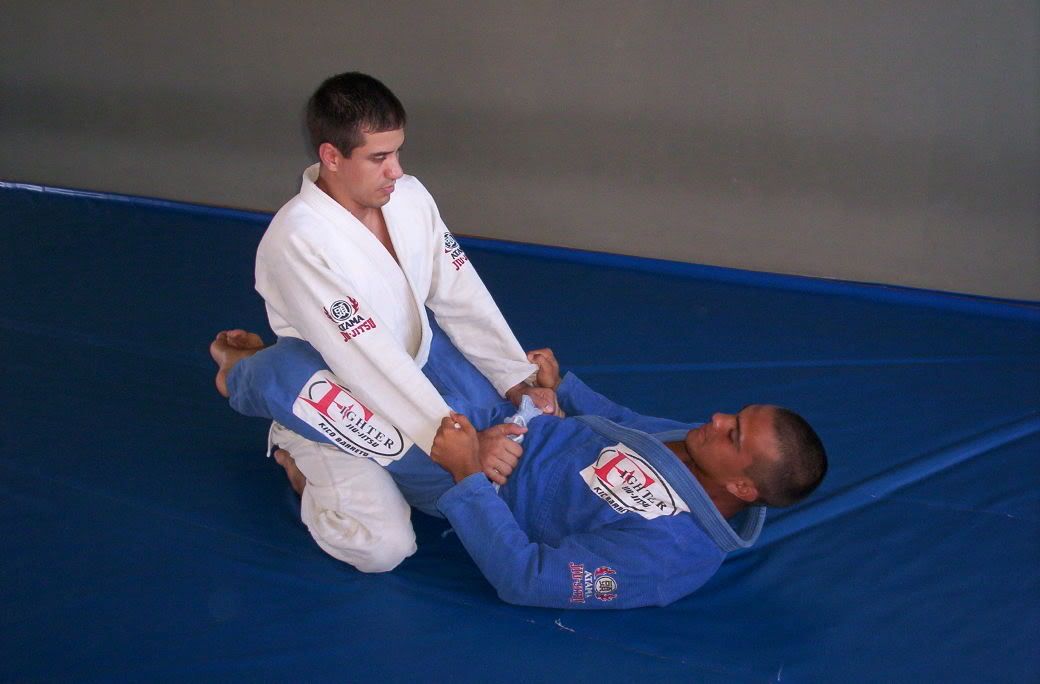 Open Guard
Open GuardIt is when you are controlling the opponent using your legs with your feet unlocked. On open guard you are able to set your feet and shins on many places like on opponent’s hip, knees, arm, shoulder, etc… To don’t let your opponent run away and disconnect you can hold him grabbing on opponent’s collar, sleeve, paints, heels and legs. Have many ways to do open guard and we will see them here on close future. Open guard still a neutral situation because he is on the top but you have many ways to sweep and submit him on there.
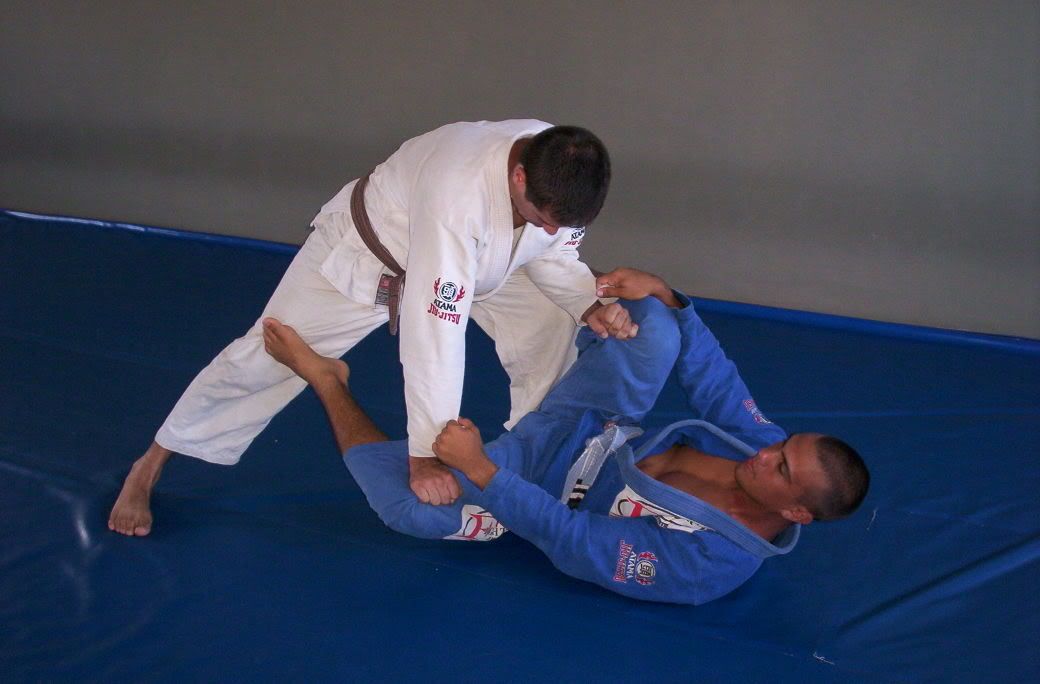 Half Guard
Half GuardIt seems like close guard but instead of set your legs around opponent’s waist you will set around opponent’s thigh controlling one opponent’s leg and letting the other free. In this case the top fighter has a little advantage over the bottom fighter. If you are on the bottom doing half guard you have some options to sweep or complete a full guard (open or closed), and your opponent have options to submit you, mount you, take your back or to pass your guard going to side control.
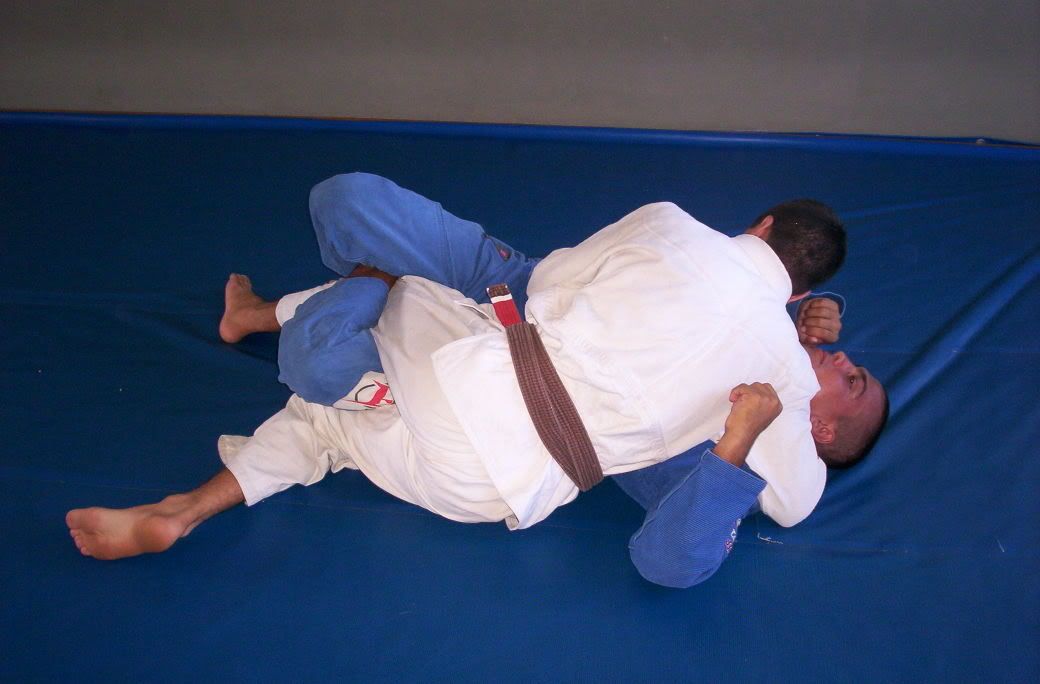
Other view of the same position
 Side Control
Side ControlWhen you are on top inside the opponent’s close guard, open guard or half guard, your goal will be go to side control or north south. Side control is when you are lined down over your opponent controlling his head and his hip with your arms and weighting your chest on his chest. Don’t touch your knees, thighs and hip on the ground, touch only your toes on the ground driving your weight to your chest.

Other variation of side control is when you are facing your opponent’s upper body, weighting your ribs over his chest, setting your hip tide in his hip, under hooking his armpit with your arm and controlling his elbow using your other arm. Don’t touch your hip, but, legs and thighs on the ground. Touch on the ground only your front ankle and rear heel or sole of foot, making your whole body hard to do that.
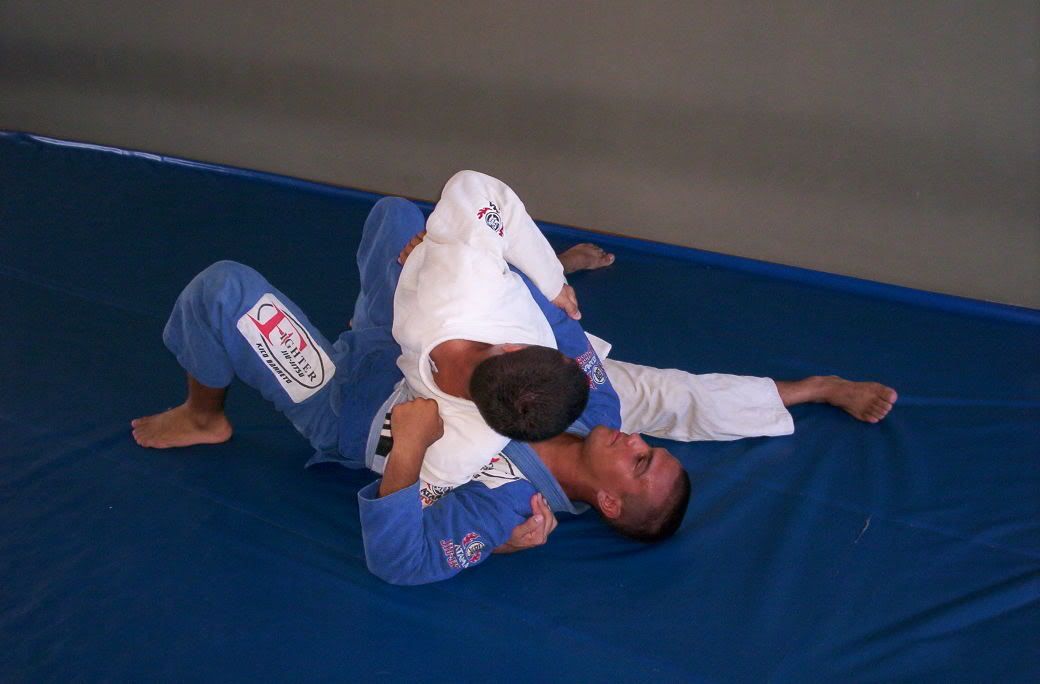 North South
North SouthLined down over your opponent you weight your chest on his chest, set your button belly over his face, Under hook his arm with your arms, grab his belt or paint close his waist and open your legs to keep your balance over him. To maximize your weight pay attention to don’t touch on the ground with your knees, hip and elbows. The only part of your body can touch on the ground is your toes.
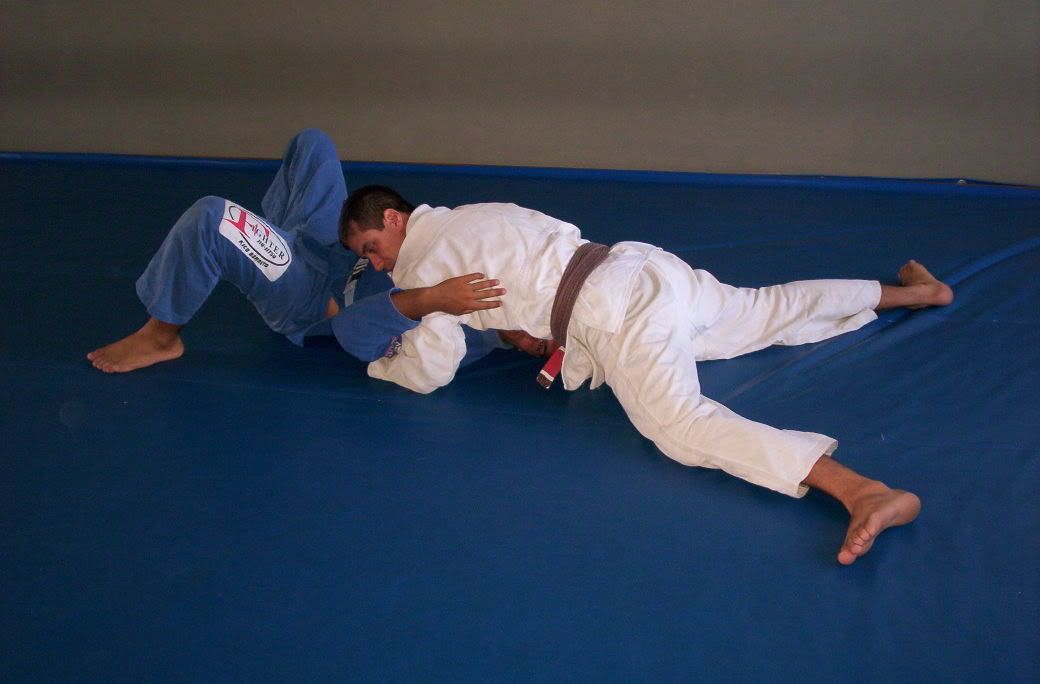 Knee on Stomach
Knee on Stomach
With the opponent lined down with his back on the ground, set one of your shins across the opponent’s upper body over his stomach, using your other leg setting your foot on the ground with your knee a little bit bended. Reach the opponent collar setting your grip behind his neck. With your other hand make a grip in his paint close to his knee. Drive your weight to the shin that is in his stomach, pushing his collar and his paint increasing the pressure over him. The only part of your body that touch on the ground is the sole of your foot that is out of his stomach, if the opponent to move trying to escape follow his movements hopping with this foot.
 Mount
Mount
With the opponent lined down with his back on the ground, sit down over your opponent’s upper body setting your knee, shins and top of your feet on the ground, touching his ribs with your legs and hid hip with your ankles.
 Back Mount
Back MountLike mount but the opponent facing the ground.
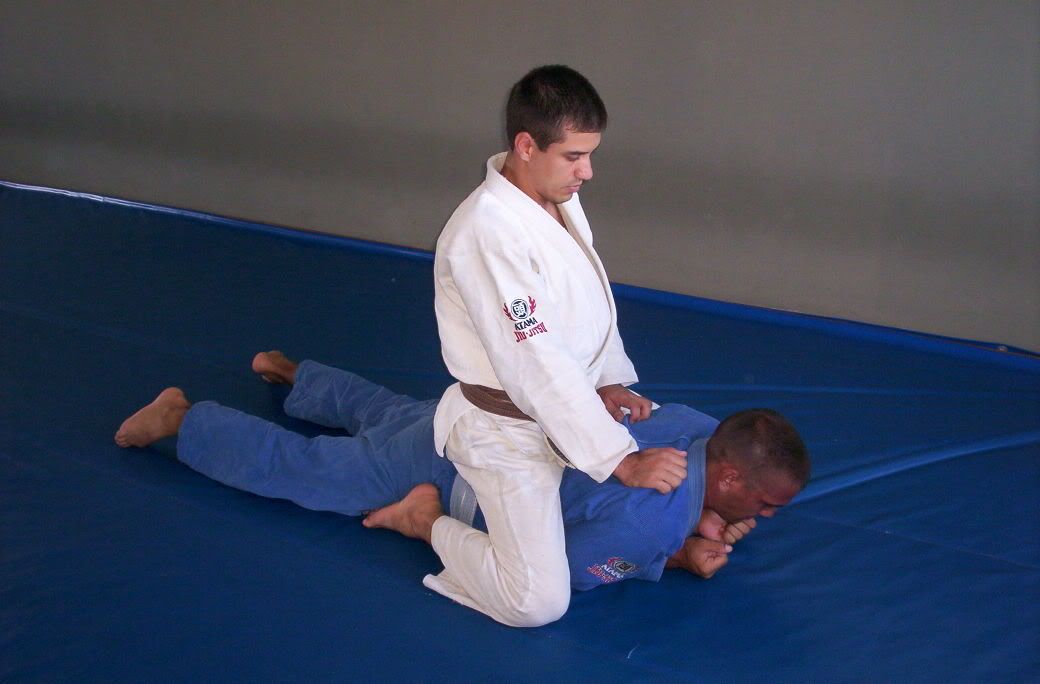 Turtle
Turtle
This situation happen when you to avoid your opponent to trap you on side control, you turn your body facing the ground and setting your knees close your elbows blocking his legs, don’t letting him to take you on back control. When you are in this situation your opponent can be in front of you, behind you or on your side.
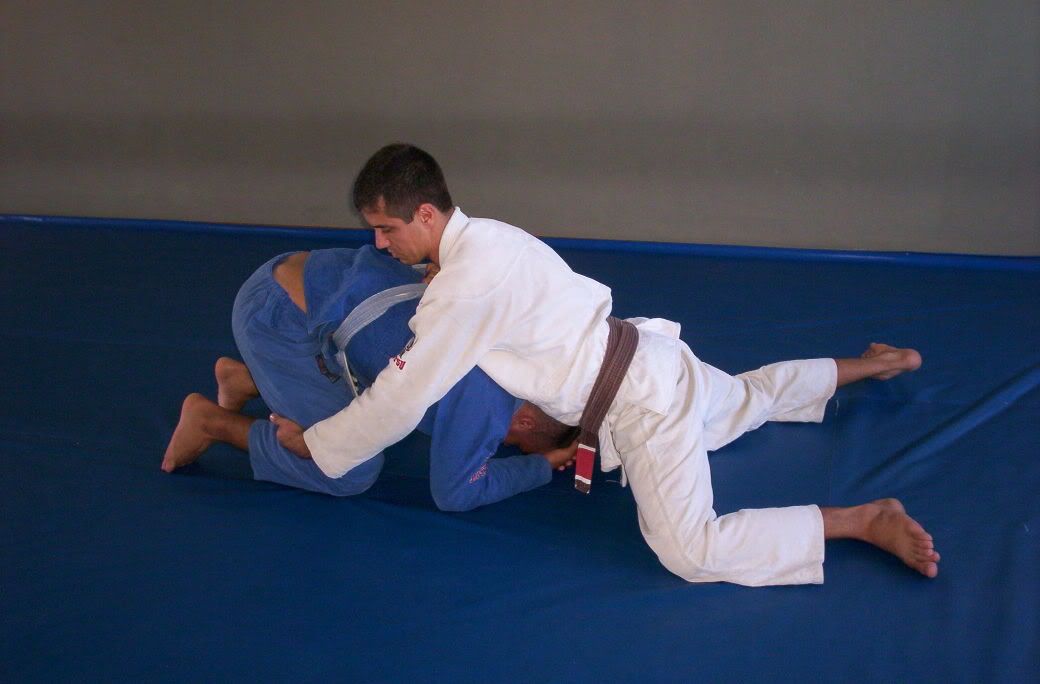
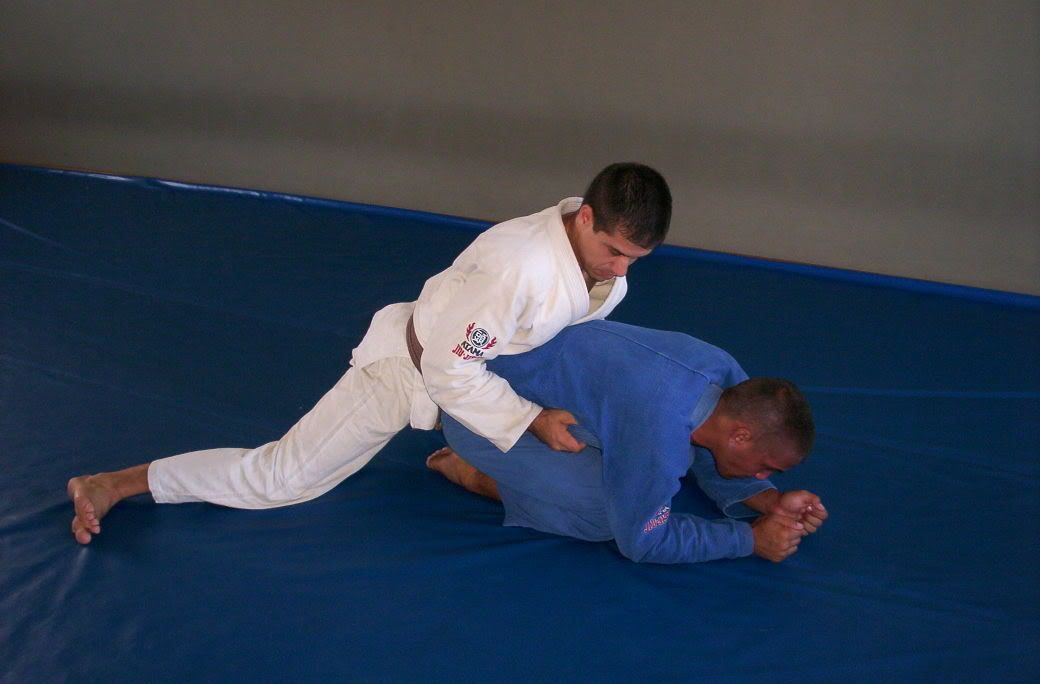 Back Control
Back Control
It is when you hug the opponent upper body or neck, setting your chest in his shoulders plates, your belly in his back, your hip in his lower back and your heels inside his legs. Your heels inside his legs are the more important things to keep you on his back. Doesn’t matter if you are on top, on bottom, if either of you are sitting up, or the opponent is standing up. As soon as you hug his upper body with your chest on his shoulders plates and your heels inside his legs will be back control. Stay on the opponent back is the better grappling situation, you can control and submit your opponent spending few energy and your opponent need spend a lot of energy to escape.
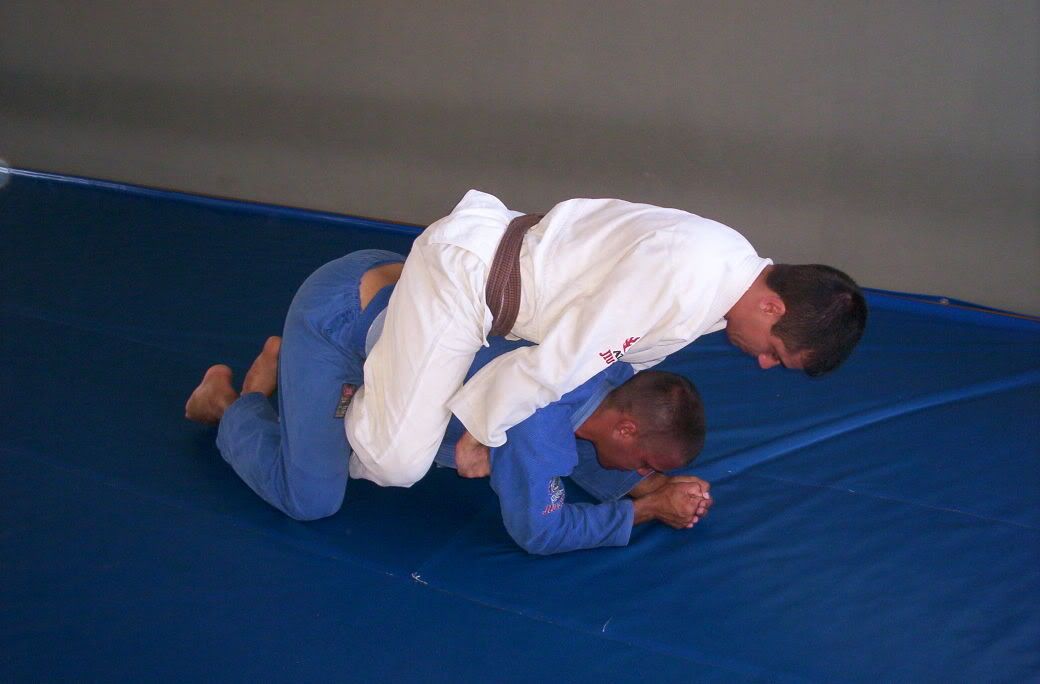
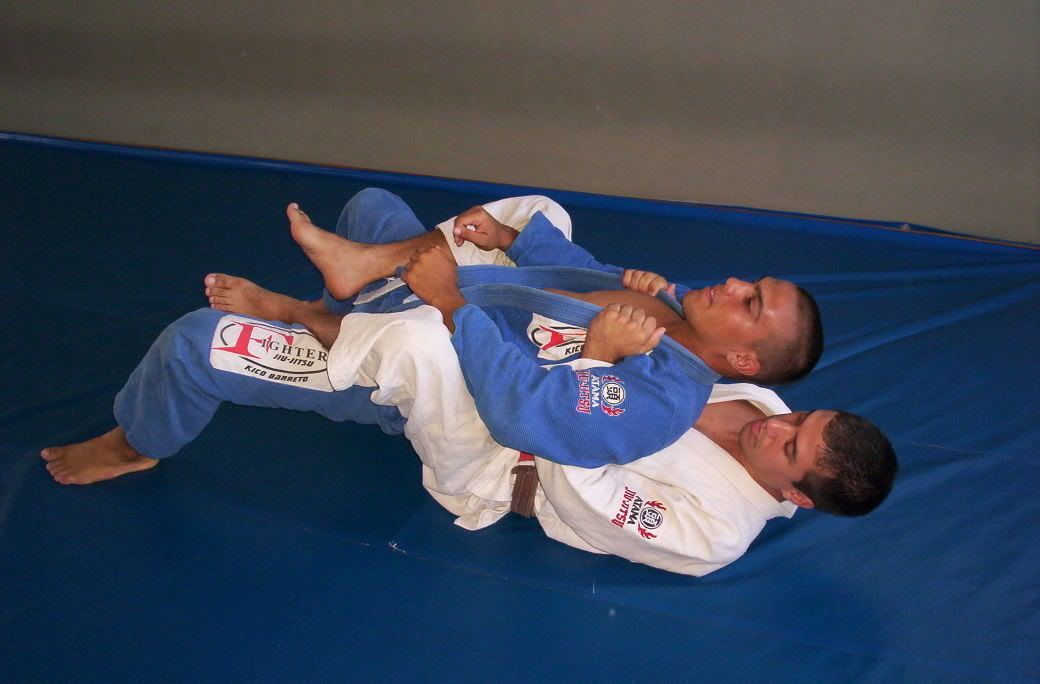
Special thanks to Fernando Supp and Kico Barreto, my students on these photos.
